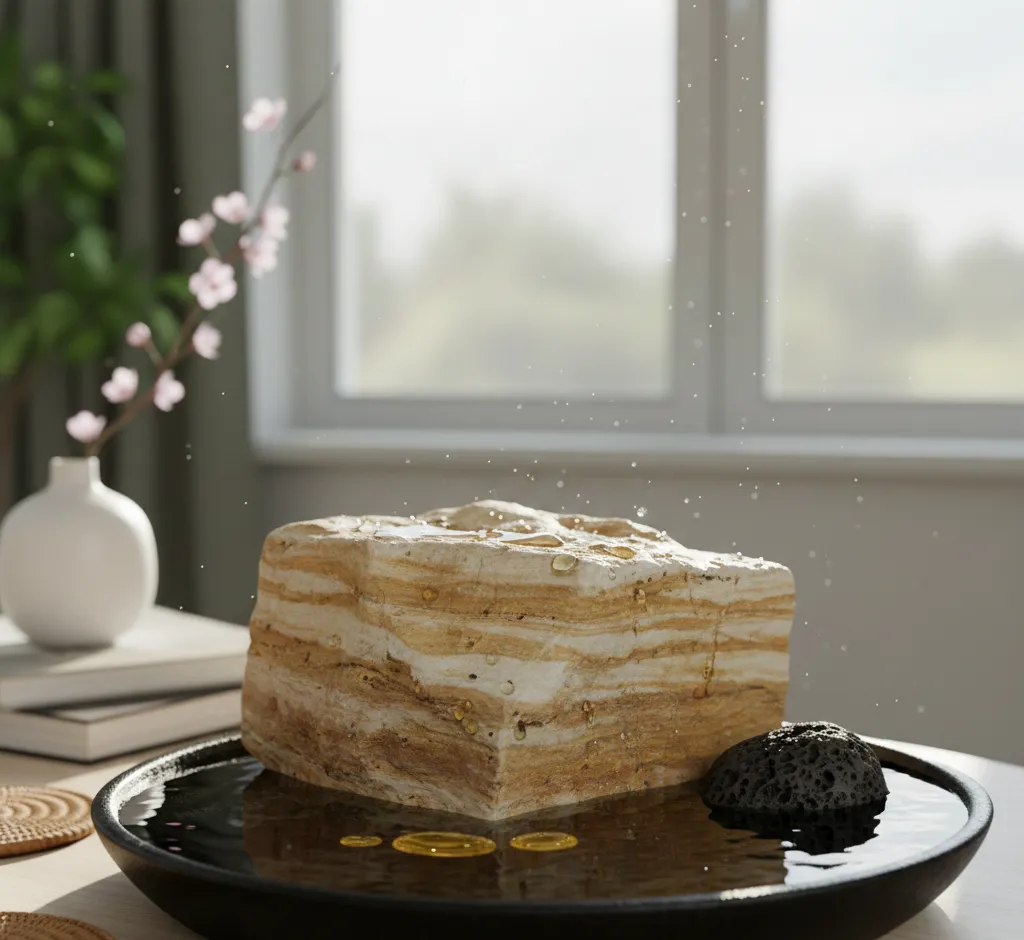Elegance Meets Ecology: The Rise of Natural Stone Humidifiers for Decorative Moisture
Discover the elegance of natural stone humidifiers. Learn how passive evaporation, sandstone, and lava rock silently moisturize your home, blending superior aesthetics with eco-friendly air quality. Perfect for decorative moisture.

Discovering Decorative Moisture: The Allure of Natural Stone Humidifiers
In the quest for a perfect living environment, we often seek a balance between **aesthetics and functionality**. The modern home is a sanctuary, and every element within it—from the lighting to the temperature—contributes to a sense of well-being. One often-overlooked yet critical component of a truly comfortable and healthy indoor space is **humidity**. While traditional humidifiers are essential tools for combating dry air, they often come with a significant drawback: their utilitarian, sometimes unattractive, presence.
This is where the concept of the **natural stone humidifier** emerges, bridging the gap between practical air treatment and sophisticated interior design. These are not electronic devices, but beautifully crafted pieces that leverage the simple, timeless principle of **natural evaporation** to gently introduce moisture into the atmosphere. More than just functional items, they serve as unique, sculptural home accents—a harmonious blend of **nature, art, and ecology**.
The movement toward natural stone humidifiers signifies a broader shift in consumer values: a preference for **sustainable, durable, and beautiful solutions** that enhance, rather than detract from, a room's decor. This comprehensive guide will explore the history, mechanics, aesthetic appeal, health benefits, and maintenance of these elegant evaporative systems, proving why they are the definitive choice for decorative moisture in the conscious home.
The Problem with Dry Air: Why Humidity Matters
Before delving into the solution, it's crucial to understand the problem. Low humidity, especially prevalent during winter months when central heating systems are active, can wreak havoc on a home and its occupants. Optimal indoor humidity levels generally fall between **40% and 60%**. When the air drops below this range, several issues arise:
- Health Implications: Dry air can irritate nasal passages, throat, and skin, exacerbating conditions like asthma, allergies, and eczema. It can also dry out mucus membranes, making the body more susceptible to colds and flu viruses.
- Damage to Furnishings: Wood floors, furniture, musical instruments, and antique pieces can crack, warp, or split as they lose moisture to the surrounding dry air.
- Static Electricity: Low humidity dramatically increases static charge, which is annoying and can potentially damage sensitive electronic equipment.
Traditional electric humidifiers solve the problem but often require frequent cleaning, can be noisy, and sometimes harbor mold or mineral dust if not meticulously maintained. Natural stone humidifiers offer a **silent, low-maintenance, and intrinsically decorative alternative** to this dilemma.
The Mechanics of Elegance: How Natural Stone Humidifiers Work
The functioning principle of a natural stone humidifier is rooted in fundamental physics: **capillary action and passive evaporation**. The design is elegantly simple, relying on the inherent properties of the stone itself.
The most common designs, though variations exist, typically involve a piece of porous, unsealed natural stone—such as **sandstone, lava rock, travertine, slate, or unglazed ceramic** (which mimics stone porosity)—submerged partially or placed in proximity to a water reservoir. Sometimes, the design is one cohesive unit, a bowl or vase carved from the stone, where the water is held directly.
- Capillary Action: The porous structure of the stone acts like a sponge. Water is drawn up from the reservoir through the stone's microscopic channels against the force of gravity. This is known as capillary action.
- Increased Surface Area: As the water permeates the stone, it dramatically increases the surface area over which the water is exposed to the air.
- Passive Evaporation: The air naturally draws moisture from the exposed, wetted surface of the stone. This process is **self-regulating**; the drier the ambient air, the faster the evaporation, and the more moisture is released. Conversely, as the humidity increases, the evaporation rate slows down.
This passive, natural process ensures that the room is humidified gently and without the risk of over-humidification, a common issue with mechanical units. Furthermore, because there is no motor, fan, or electricity, they are **completely silent** and **consummate no energy** beyond the environmental cost of their production.
Choosing the Right Stone: Aesthetic and Practical Considerations
The choice of stone is paramount, influencing both the decorative impact and the evaporative efficiency:
- Sandstone: Highly porous and visually appealing with its layered, earthy tones. It offers excellent water absorption and a fast, efficient evaporative rate. Sandstone pieces often evoke a rustic, desert-like serenity.
- Lava Rock (Basalt): Characterized by its dark, vesicular (holey) structure. Lava rock is exceptionally lightweight, extremely porous, and has a contemporary, minimalist aesthetic. Its high surface area-to-volume ratio makes it a very effective natural diffuser.
- Travertine: A type of limestone formed in hot springs, known for its distinctive pitted texture and beautiful creamy, beige, or reddish hues. Its natural cavities aid in water retention and release, adding a touch of Roman-era luxury.
- Slate: While generally less porous than sandstone, certain types of slate, especially those with natural fissures, can be used in design-forward pieces. Slate's deep, cool colors offer a sophisticated contrast to lighter wall tones.
- Unglazed Ceramic/Terracotta: Though technically clay, it shares the unsealed, porous nature of natural stone, offering superior capillary action. Terracotta often comes in artistic, sculptural forms and is the most accessible material for this application.
SEO Insight: When selecting a natural stone humidifier, look for terms like **'unsealed,' 'porous,' and 'natural finish'** to ensure maximum evaporative performance. Glazed or highly polished stones will prevent the necessary water wicking action.
The Decorative Imperative: Integrating Stone into Interior Design
The true selling point of natural stone humidifiers is their seamless integration into high-end interior design schemes. They transcend the role of a utility item to become a **focal point of decor**, marrying the rugged beauty of the earth with the polished look of a curated home.
Styling for Different Environments:
The versatility of natural stone allows these pieces to complement various design styles:
1. The Minimalist Home: A piece of dark, unpolished basalt or a geometrically carved slate slab serves as a grounded, monolithic accent. Its function is hidden within its form, aligning perfectly with the 'less is more' philosophy.
2. The Rustic/Bohemian Aesthetic: Rough-cut sandstone or river rock arrangements, often combined with live edge wood bases, echo the ruggedness of nature. This style pairs beautifully with woven textiles and organic materials.
3. The Modern Luxury Apartment: Highly-veined, polished travertine or marble (used as the base/container, with a more porous rock insert) adds a touch of classic, timeless luxury. The humidifier becomes a centerpiece on a console table or mantelpiece.
4. The Japandi Style: Simple, unadorned terracotta or ceramic pieces with a natural stone element fit the quiet elegance of Japandi design, emphasizing natural texture and muted colors.
Beyond Moisture: A Multisensory Experience
Many designs incorporate an additional, intentional aesthetic feature: the visible presence of water. Whether it's a shallow pool reflecting light or the subtle darkening of the stone as it absorbs moisture, the visual process itself is calming. This effect is often enhanced by:
- Aromatherapy Infusion: Essential oils can be dropped directly onto the wetted stone surface. As the water evaporates, it subtly diffuses the scent throughout the room, turning the piece into a passive, eco-friendly diffuser.
- Ambient Sound: While silent, some designs incorporate a shallow basin where the water level can be adjusted to allow for a gentle, almost imperceptible lapping or trickling sound, enhancing the room's meditative atmosphere.
Sustainability and Longevity: A Green Solution
In an era focused on reducing our environmental footprint, the natural stone humidifier stands out as a highly **sustainable choice** for air treatment. Unlike electric models that rely on plastic components, filters, and energy, these stone pieces offer:
- Zero Energy Consumption: Operating purely through passive evaporation, they have no running costs and generate no greenhouse gas emissions during use.
- Exceptional Durability: Natural stone is one of the most durable materials on earth. A well-cared-for stone humidifier can last for centuries, contrasting sharply with the limited lifespan of plastic electronic appliances.
- Reduced Waste: The need for replacement filters and plastic reservoirs is eliminated, contributing to less landfill waste.
Choosing a stone humidifier is not just an aesthetic decision; it's an **investment in sustainable, long-term home health**.
Maintenance and Care: Keeping the Stone Beautiful and Efficient
While significantly lower maintenance than mechanical units, natural stone humidifiers do require simple, periodic care to maintain optimal function and appearance.
Routine Care:
1. Water Quality: Using **distilled or demineralized water** is highly recommended. Tap water contains minerals that, upon evaporation, will precipitate as white scale (calcium and magnesium deposits) on the stone's surface, reducing its porosity and evaporative efficiency over time.
2. Simple Cleaning: Every few weeks, the water reservoir should be rinsed and refilled. If you notice a thin film or discoloration, a light scrub with a soft brush and clean water is usually sufficient. Avoid harsh chemical cleaners, which can be absorbed by the porous stone.
Dealing with Mineral Build-up:
If mineral scale does accumulate, the efficiency of the stone can be restored:
- Vinegar Soak: Prepare a solution of equal parts white vinegar and water. Submerge the stone entirely in this solution for a few hours or overnight. The mild acidity of the vinegar will slowly dissolve the mineral deposits.
- Gentle Scrubbing: After soaking, use a non-metallic brush or a soft abrasive pad (like a natural loofah) to gently scrub the stone under running water.
- Rinsing and Drying: Rinse the stone thoroughly to remove all traces of vinegar and allow it to air dry completely before returning it to the water reservoir.
Safety Note: If using the stone for essential oil diffusion, a separate, specific cleaning process is often needed to prevent oil residue from clogging the pores. Consult the manufacturer's guidelines, but a warm, mild soap solution may be required.
A Comparative Analysis: Stone vs. Electric Humidifiers
To summarize the advantages, a table offers a clear comparison:
| Feature | Natural Stone Humidifier | Electric Humidifier (Ultrasonic/Evaporative) |
|---|---|---|
| Aesthetic | High-end, decorative, sculptural home accent | Utilitarian, often plastic, requires hiding |
| Power Source | Zero electricity (Passive Evaporation) | Requires constant electricity (Active Fan/Motor) |
| Noise Level | Completely silent | Varies from low hum to noticeable fan noise |
| Maintenance | Low; periodic rinsing/vinegar soak; no filters | High; daily cleaning, filter replacement, descaling |
| Moisture Output | Gentle, self-regulating, lower volume | High volume, requires a built-in hygrometer for control |
| Longevity | Indefinite (Centuries) | Limited (Few years, depending on motor/components) |
The Future of Home Wellness: Embracing Natural Solutions
The natural stone humidifier is more than a novelty; it represents a philosophy of living. It speaks to a desire for authenticity, sustainability, and the elegant integration of natural elements into our increasingly digitized lives. As home wellness and air quality continue to dominate consumer interest, products that offer a **low-tech, high-impact solution** will continue to gain traction.
Whether you are a decorator seeking a final, grounding element for a room, or an environmentally-conscious individual looking for a passive way to improve your air quality, the allure of natural stone is undeniable. It is a quiet testament to the beauty of simplicity—a piece of the earth brought inside to care for your air, silently and beautifully.
By investing in a piece of natural stone, you are not just purchasing a humidifier; you are acquiring a **timeless piece of functional art** that will provide subtle, healthy moisture for years to come, without ever compromising the integrity of your interior design vision. It is the definitive solution for **decorative moisture**—a true fusion of elegance and ecology.


